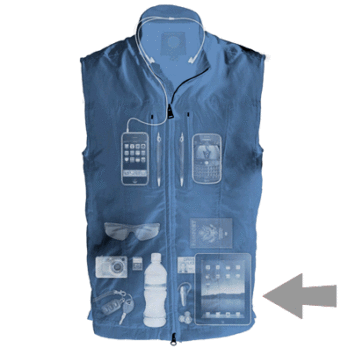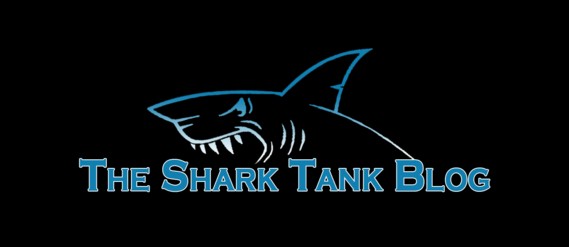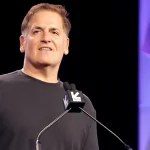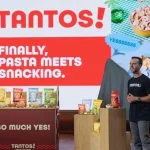Scott E Vest founder Scott Jordan pissed a lot of people off this week. To read about that, check out Scott Jordan Opens Mouth, Inserts Foot. Scott E Vest on Indie GoGo? Isn’t the crowd funding platform used for start-ups seeking seed money? Scott Jordan, founder of Scott E Vest doesn’t think so and he’s using Indie GoGo to get back to where he started with his business. I spoke with Scott the day before his Indie GoGo campaign went live to get some insights as to why an established business would use crowdfunding.
Scott E Vest on Indie GoGo? Isn’t the crowd funding platform used for start-ups seeking seed money? Scott Jordan, founder of Scott E Vest doesn’t think so and he’s using Indie GoGo to get back to where he started with his business. I spoke with Scott the day before his Indie GoGo campaign went live to get some insights as to why an established business would use crowdfunding.
“I want to use Indie GoGo as an awareness campaign,” he said. “The Genesis of the idea is we’re looking to expose our brand to more customers. That’s part of the reason why we went on Shark Tank, in this case it’s to raise awareness and sell product. Most people raising funds on Kickstarter and Indie GoGo need money to make the product – I want the customer. There’s no risk in getting product with us, which is not necessarily so with other crowdfunded businesses.”
The dark side of crowdfunding is when a business raises money, hits their target, and doesn’t fulfill orders to customers. An established business, like Scott E Vest, has the ability to fulfill orders and probably has a lot more to lose if they don’t. As Jordan says, “We recognize the success of other companies – a drinking hoodie raised 600K, Pebble raised $20 million – crowdfunding works to find the money, but we’re reversing the crowdfunding platform. We’re using it to find the crowd.”
Scott E Vest Started with Crowdfunding
“The Scott E Vest Indie GoGo campaign is consistent with what we’ve done historically. We pre – sold other previous lines before they were made. In 2001, when I started Scott E Vest, I only had a sample – no factory, no inventory, nothing. I took orders on a pre – sale basis and figured it out.”
With apologies to Al Gore, although Mr. Jordan didn’t “invent” crowdfunding, he utilized the basic principles of the crowdfunding platform, before there was a platform. He’s certainly not the first business to sell product on a pre-sale basis either, Sears was doing the same thing in the 1800’s with their catalogues. What has changed with the advent of crowdfunding is the ready availability of the mechanism. Now, anyone with an idea the crowd likes can theoretically get a product made.
“It creates more interest,” says Jordan, “and it ties success to market demand. It’s a disruptive platform that hasn’t been fully utilized. What we’re seeking to do by using it as a branding mechanism will fundamentally change the current model. As an established business, it’s a no-brainer. Allowing us 4 months lead time lets us know how much we product need to make. Why not ask consumer if they’d like to commit to buying the product ahead of time and pass on some savings to them?”
There aren’t many established brands using crowdfunding as a pre-order mechanism, but other Shark Tank entrepreneurs have done it – before they had a brand. Shelton Wilder essentially launched her Kickstarter campaign for the Shemie the night her episode aired and pre-sold her product all the way to the campaign’s goal. Gary Gagnon – a season three entrepreneur like Mr. Jordan – used Kickstarter as a pre-sale mechanism for ReKixx Sneakers. The difference between those businesses and Scott E Vest is they weren’t established brands.
Crowdfunding and Branding
“There aren’t many other brands currently using crowdfunding as a pre-order mechanism,” says Scott. “In the future, if campaigns like ours are successful, larger brands would be foolish not to see the benefit. People need to make the distinction between crowdfunding and pre-order. Which is it? The answer is both, but crowdfunding definitely IS a pre-order mechanism. Pebble proved an established brand and a ‘real company’ can sell on a pre-sale basis. They raised $20 million. We’re not looking for those kind of numbers, but if we don’t do at least $600K, it will be disappointing.”
“If more brands start using the crowd to pre-sell, it can turn economy on its head. Look at Apple. They send new phones to consumers directly from a fulfillment center in China. They make what they’ve already sold and ship it. They can do it because they have scale. If this is successful, Scott E Vest will get the same scale, but on a smaller scale. Pre-selling enables you to recognize the benefit of scale regardless of size – which is good in ALL cases. It’s a logical way of selling product. The crowd needs to see the benefit, and that benefit is passing on savings to the customer.”
“The real question is why do people fund on Indie GoGo: do they want a deal, do they like the video? How do you translate that? Indie GoGo recognizes the benefits. I wanted to do a crowdfunding campaign for quite a while and Indie GoGo made no secret of the fact they wanted our business. The story for them is it can transform the way people market their products and make them a platform for pre-selling eCommerce. If it’s successful, we’ll do it again. If others adopt the model, Indie GoGo could be bigger than EBay.”
The Scott E Vest Indie GoGo campaign goes live on June 24, 2015. The stated goal is modest $30K and as of the writing of this post, it’s been live around three hours. They’ve pre-sold nearly $5K worth of the Pocket Fleece Jackets at $150 a pop, so making the $30K goal seems realistic. Can Scott E Vest get to Jordan’s ‘real’ goal of $600K? if it does, crowdfunding may never be the same again.




















Scott Jordan — I was going to get your vest for my husband for his birthday.
But since you’re so opinionated — and wrongly so — about Fox News viewers of which I and my husband are, you can take your vest and give it to Schumer the clown, see if he wears it at all. He’ll probably not even want one. Hope you lose lots of money for your opinion.
After what Mr. Jordan’s comments regarding conservative viewers of FOX, a person would have to be a fool to buy any if his products. I know I won’t and would encourage everyone I know to follow suit.
The irony is he advertises the vest on the Hannity Show!
He sure does not like people who watch Fox news. What else is he a racist about. What a worthless company.
I watch Hannity every night and I’ve never seen it advertised.
I saw it last Tuesday during Hannity.
Just to let you know I watch Fox News! So I won’t be buying your vest! Thanks for the heads up….
I was going to buy several of these for my family.. but since I heard what he said about Fox viewers.. “no way.”. I am sharing to all I know to boycott this product.
I WAS going to buy 3 . . . not now, guys like this and celebrities and athletes aren’t smart enough to think that half the country have opposite opinion. How did they become successful with such thinking.
Never, ever buy this hideous vest! So even he knows this is a useless product! Save your money, people, by things from companies who appreciate your business.
I am a Fox News watcher and would not touch one of vest I am not that gullible
Will not be buying anything from this company. The CEO believes his customer base is a bunch of unintelligent folk, and he was stupid enough to publish that!! Guess what, you probably lost 95% of your sales!
Scott unfriended me on Facebook because he is intolerant of opposing political views! AND he advertises on FOX!!!
Hey Scottee
I thought your vests were a great idea but I must be stupid because I watch Fox News, specifically Sean Hannity and Tucker Carlson. Consequently I will not be ordering one for my husband for his birthday, he watches too. Don’t bother to advertise on Fox anymore…..I think your possibilities for business there may be greatly diminished.
I am a fox news channel viewer, and am greatly offended by the comments of your CEO.
I am a deplorable who will not be buying your product. I will share your opinion of us Fox News watchers with my family and friends. As a business owner myself I can’t believe how stupid a move that was. Maybe you should start watching Fox.
I was planning to buy your vests for my son’s birthdays, but since you consider Fox viewers to be unintelligent, then I must be too stupid to even know how to buy you stuff. Buh bye
Same here!! This was my pick for my son for Christmas. This was a perfect pic for when he flies home for visits. Obviously this person is not going to waste her money to a corporation that’s CEO has no respect for their customers!!
You won’t have to worry about thin F— weird family buy you goods
Who would buy this crap?
Jordan reportedly posted on his Facebook page that he thought a lot of his customers were unintelligent. But not just any customers, just the ones who watch Fox News. Source: Independent Journal Review. Thanks for helping me decide: to buy or not to buy – Bye is the answer.
This vest looked like a good idea right up until the point when you called potential customers as “not very bright”! I will never buy anything from you or your company and I also recommend that Fox News stops advertising your products. Hope you enjoy going bankrupt!!
Just was going to order vests for our new hiking club and saw this on facebook. You have got to be a weird person. 40 vests we needed 40. Someone “smart” will come up with something better and they probably watch fox news
I was going to get the vest too. But knowing your true character – a foul mouthed, uneducated liberal – nope.
https://www.sharktankblog.com/scott-jordan-opens-mouth-inserts-foot/
I watch Fox and will not purchase anything you are linked to. Talk about “cutting off your nose to spite your face” or “biting the hand that feeds you!” Were you brought up in a barn?
https://www.sharktankblog.com/scott-jordan-opens-mouth-inserts-foot/
Still trying to sell your SHITTyVEST?
invented a sweater purse for guys, not very intelligent. I’m sure he can store everything for his itinerary in his sweater purse .
I think these vests suck!
I’m one of those folks that won’t be buying your stuff. Thanks
So, if some people have a different point of view from yours they are stupid? Leftist views are unintelligent, the most ignorant and the most dangerous on the planet!
By the way, your vests are not great.
Thanks for letting me know I’m wrong. This SMART woman has changed her mind about buying anything from SCOTTeVEST.
I’m sure this is going to thrill the Shark that invested in this company. Bad move fella.
Nobody invested. They de-vested. (See what I did there?)
If Shark Tank cares about its viewers, it will cut all ties and not play the episode with this egotistical waste of human life.
On the contrary, they should (and will) do the opposite.
I remember the episode. It stands out because that I recall “the asshole with the product that Bluetooth made obsolete.”
He came off as an ass on the show.
Play it over and over again so everyone can hear about the asshole who (Shark) “Tanked” his business and justification for being so high and mighty in the first place.
Why would a CEO alienate the ones that are most likely to purchase his Company’s product? I’m out.
This man is wrong. I also watch Fox News and was considering one of his vests. No longer.
Scott Jordan…you can stick your pos vest down the shithole..how about that, you ass clown!
As with so many liberals, this little man thought he had the last laugh on all the conservative folks that watch Fox. I hope he still has his “sense of humor” when his company goes belly up. By the way, we’ll still be watching Fox while he attempts to reconstruct his life and livelihood. Good luck with your little vest.